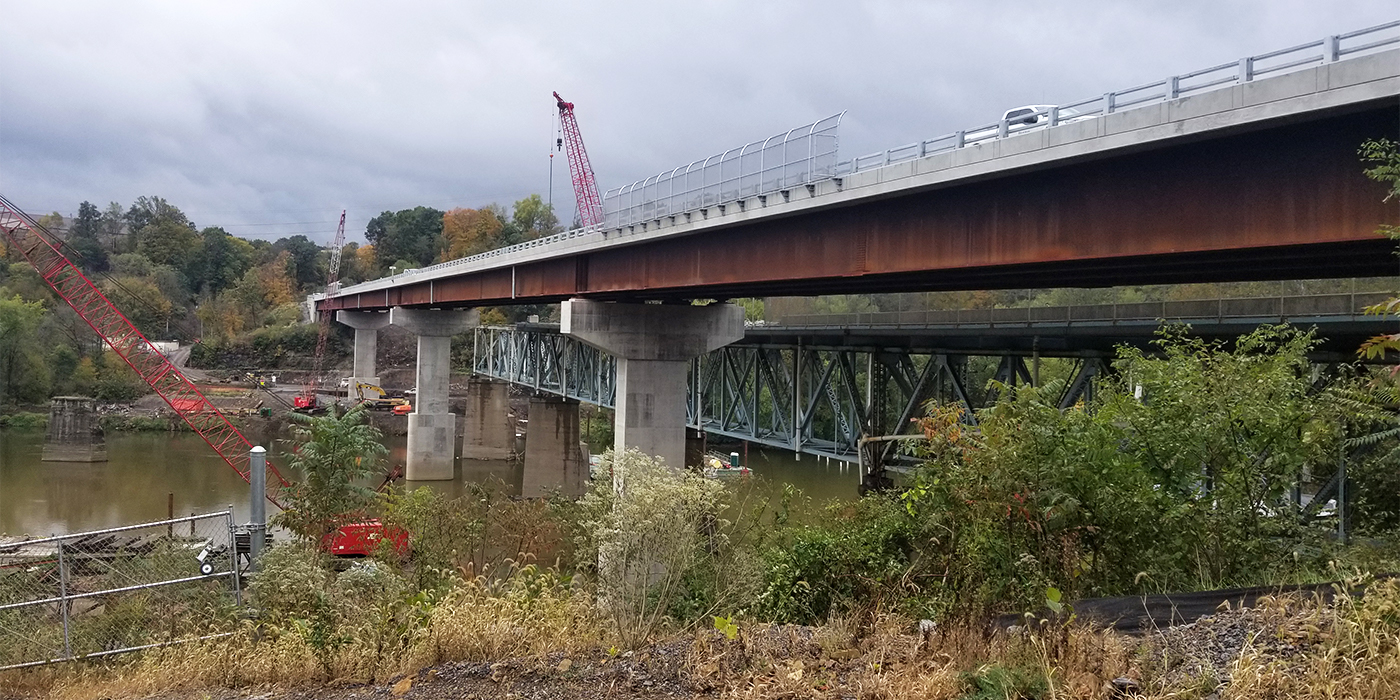Challenge
A historic bridge in Pennsylvania needed a new, safer structure.
Services Involved
- Bridge Design
- Construction Services
- Environmental Planning
- Highway Design
- Planning
- Public Involvement
- Traffic Engineering
- Utilities
- Waterways Permitting
Koppel Bridge Replacement
Located in Pennsylvania, the Koppel Bridge is a historic, 1,200-foot structure built in 1914. It was originally a privately-owned toll bridge that the state legislature purchased in 1944. Since its purchase, extensive repairs were made in 1958, 1974, and 1994.
In 2007, a similar structure—the Interstate 35 West Mississippi River Bridge in Minnesota—suddenly collapsed and fell into the Mississippi. In response to the tragedy, the Koppel Bridge was among many similar bridges inspected nationally. It was found safe for travel but in poor condition.
To correct this serious issue, the Pennsylvania Department of Transportation, District 11-0, hired ms consultants to design a new structure. The new bridge is located on state Route 351 between the town of Koppel and North Sewickley Township, stretching over two railroads and over the Beaver River in Beaver County.
The New Koppel Bridge
The new, 1,240-foot, four-span, two-lane bridge hangs approximately 100 feet above the river. In order to maintain traffic and also provide improvements to the roadway approach, the new bridge was built just downstream of the original structure. The original bridge remained in use while the new structure was built.
Project Challenges
Correcting the Vertical Alignment
The profile of the existing bridge was unusual with a low point at the center. During rainstorms the scuppers would sometimes clog and the bridge would fill with water. To eliminate the severe ponding problems, the deck was replaced, shifting the low point off the bridge deck.
Girder Delivery
The bridge is located in a river valley flanked by steep hillsides making construction access and material delivery into the valley difficult. One challenge involved the geometric constraints of delivering beams to the project site. The length of girder sections were restricted because of the windy roads they would be delivered to the project site on. Additionally, most sections needed to cross the existing bridge to be unloaded in order to be erected. A “Girder Delivery Analysis” was performed on the existing bridge to determine the feasibility of transporting the girder sections across without overstressing the bridge components.
Environmental Considerations
Proposed stormwater runoff was managed by utilizing an infiltration basin with amended topsoil and a modified pipe underdrain with a slow release orifice on the west side of the river. Vegetative swales and rock check dams were utilized on the east side of the river.
The proposed roadway drainage system considered the challenges presented by the steep topography routing discharge away from the structures.

